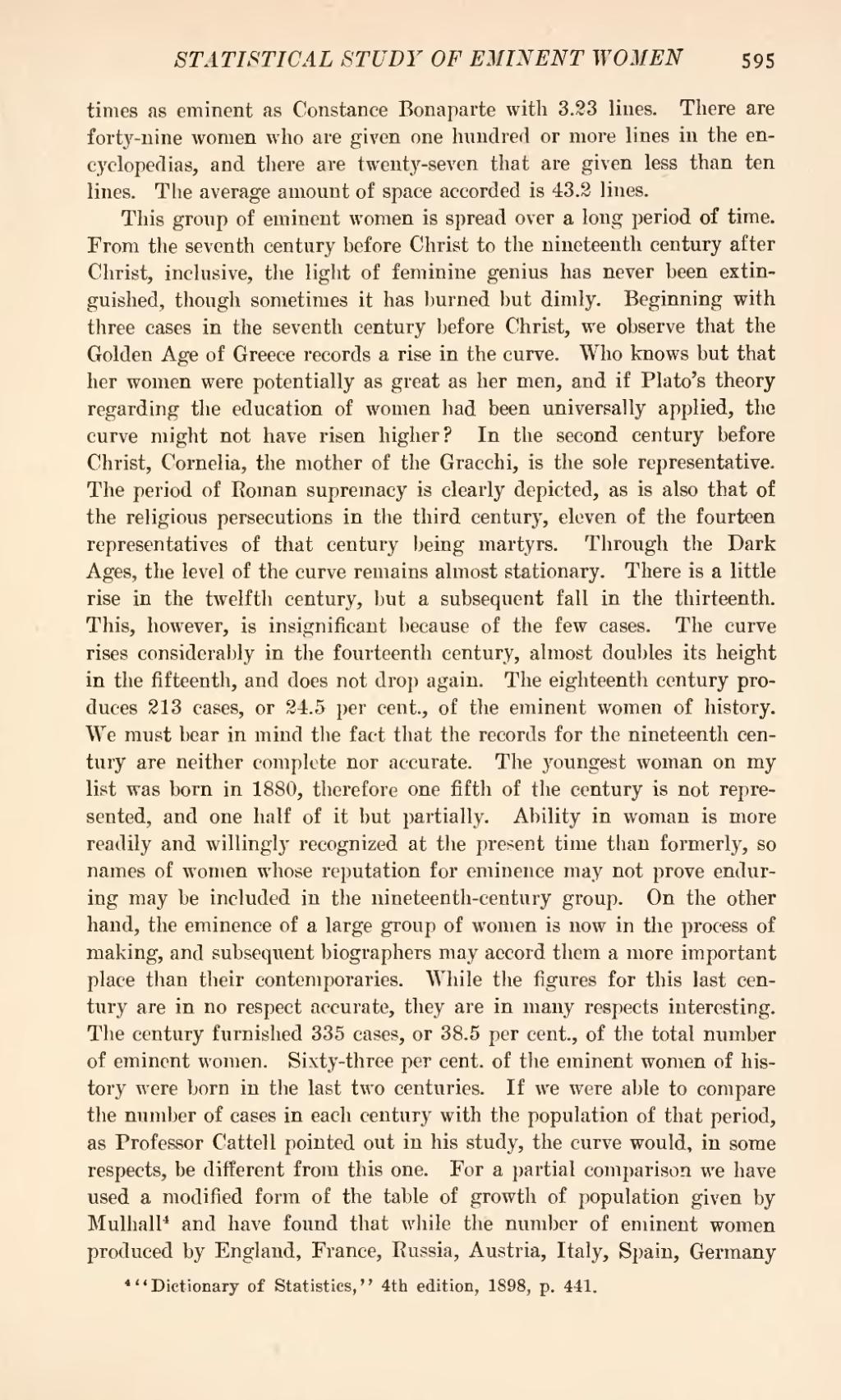times as eminent as Constance Bonaparte with 3.23 lines. There are forty-nine women who are given one hundred or more lines in the encyclopedias, and there are twenty-seven that are given less than ten lines. The average amount of space accorded is 43.2 lines.
This group of eminent women is spread over a long period of time. From the seventh century before Christ to the nineteenth century after Christ, inclusive, the light of feminine genius has never been extinguished, though sometimes it has burned but dimly. Beginning with three cases in the seventh century before Christ, we observe that the Golden Age of Greece records a rise in the curve. Who knows but that her women were potentially as great as her men, and if Plato's theory regarding the education of women had been universally applied, the curve might not have risen higher? In the second century before Christ, Cornelia, the mother of the Gracchi, is the sole representative. The period of Roman supremacy is clearly depicted, as is also that of the religious persecutions in the third century, eleven of the fourteen representatives of that century being martyrs. Through the Dark Ages, the level of the curve remains almost stationary. There is a little rise in the twelfth century, but a subsequent fall in the thirteenth. This, however, is insignificant because of the few cases. The curve rises considerably in the fourteenth century, almost doubles its height in the fifteenth, and does not drop again. The eighteenth century produces 213 cases, or 24.5 per cent., of the eminent women of history. We must bear in mind the fact that the records for the nineteenth century are neither complete nor accurate. The youngest woman on my list was born in 1880, therefore one fifth of the century is not represented, and one half of it but partially. Ability in woman is more readily and willingly recognized at the present time than formerly, so names of women whose reputation for eminence may not prove enduring may be included in the nineteenth-century group. On the other hand, the eminence of a large group of women is now in the process of making, and subsequent biographers may accord them a more important place than their contemporaries. While the figures for this last century are in no respect accurate, they are in many respects interesting. The century furnished 335 cases, or 38.5 per cent., of the total number of eminent women. Sixty-three per cent, of the eminent women of history were born in the last two centuries. If we were able to compare the number of cases in each century with the population of that period, as Professor Cattell pointed out in his study, the curve would, in some respects, be different from this one. For a partial comparison we have used a modified form of the table of growth of population given by Mulhall[1] and have found that while the number of eminent women produced by England, France, Russia, Austria, Italy, Spain, Germany
- ↑ "Dictionary of Statistics," 4th edition, 1898, p. 441.
